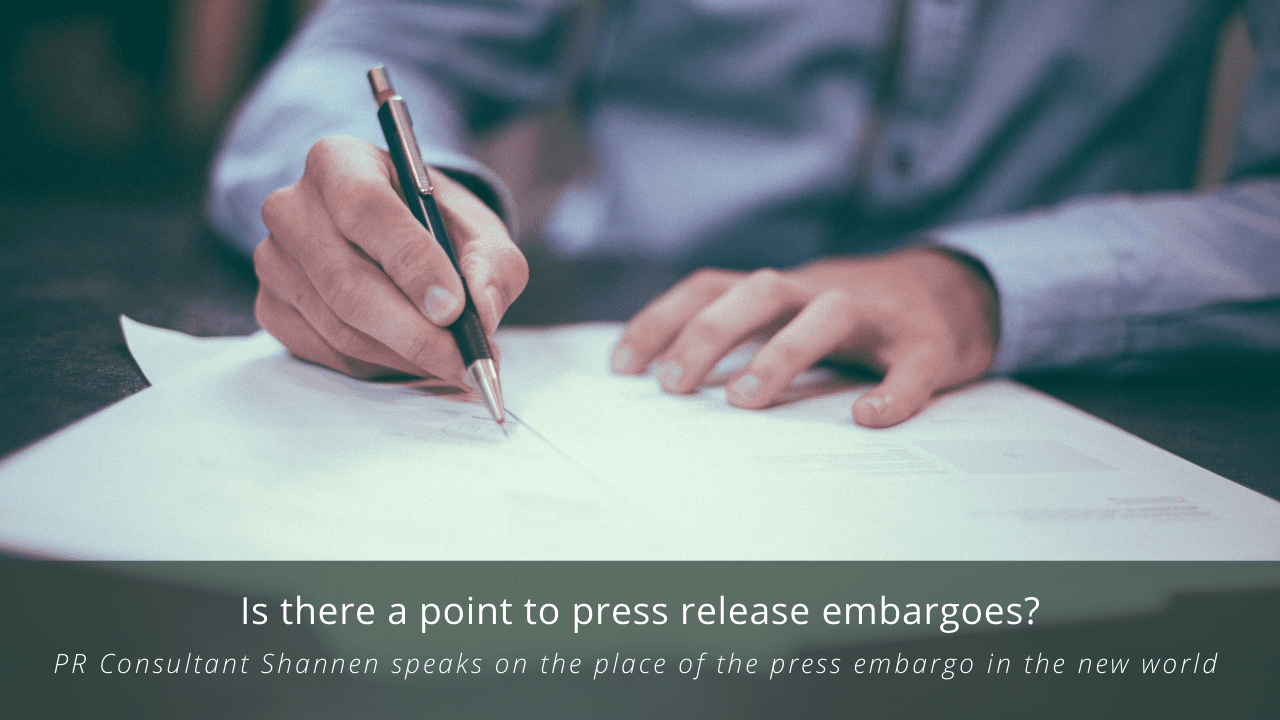This article is part of our series Watercooler Chat, where the SYNC PR team shares insights and opinions from their experience in the industry.
The advent of social media has made it hard to keep up.
I don’t just mean this in the context of our personal lives, but also in our work as PR practitioners. Across the globe, social media has upended the media landscape and caused seismic shifts in power. The mainstream media, in terms of print, broadcast and to some extent, web-based formats, no longer has monopoly over the news. Rather, traditional and digital media – who are facing their own battles of budget cuts and upkeep of advertising revenues – are made to play catch-on on social media; the platform du jour where news breaks, gets disseminated and discussed.
It certainly is a Sisyphean-like task to monitor the vast and ever-evolving media landscape.
As such, it is within good practice for modern PR practitioners to continually hone and sharpen our PR instincts, by reviewing what we have in our communications toolkit.
In particular, I want to take a look at a polarising item in our PR bag: The press embargo.
What exactly is a press embargo?

Essentially, a press embargo is an agreement between a source and a media outlet that information, as laid out in the press release, will not be published until a predetermined date and time. The key term of this definition is “agreement”. It is more of a gentleman’s agreement (or gentlewoman’s) as opposed to a legally binding verbal or written contract.
There are two major implications to this. Firstly, both parties have to agree to these terms. It is generally good practice to make the implicit, explicit. In other words, there should be avoidance of doubt as to whether the journalist has agreed to the press embargo or not. Unfortunately, it is by no means a magic spell; slapping the word “EMBARGOED” at the top of the press release does not mean that the journalist has agreed to it. As with all things, asking for consent is a generally healthy principle to live by.
Secondly, the agreement is founded on trust. While you can assume that reporters have journalistic integrity, there is still a risk, however small, that the reporter may renegade on the embargo agreement. If so, there are situations where reporters from other publications would proceed to break the embargo since the news has been leaked.
A quick search on Google will reveal the various polarising opinions about press embargos from journalists and PR practitioners alike. Proponents of the press embargo will argue that it’s a win-win-win situation for the media outlet, the agency and for their client. Detractors lambast it for being a PR manipulation tactic. In fact, TechCrunch’s Michael Arrington published a strongly worded protest calling for the death of the press embargo. Yet, the use of the press embargo continues to be used heavily by tech companies, from Silicon Valley or elsewhere, especially in relation to product rollouts, acquisitions or funding announcements.
This article is not meant to be prescriptive so it’s really up to you to form your own opinion about this highly debatable tactic.
Read also: How to write a compelling press release.
Why and how we use the press embargo

Having said that, we at SYNC PR, do use press embargos because we believe that this traditional press tool, under justified circumstances, does have its place in modern PR. Here are some of our reasons as to why and how we do so:
When used properly, the press embargo could benefit all parties. In the modern newsroom which puts a premium on speed, the ever-pressurised journalist would have time to prepare the story, be it verifying facts or generating insights, and publish it in a timely manner when the embargo ends. News organisations are now equipped with reporters who have to do more in less time as they no longer serve daily deadlines but a 24/7 news cycle. As such, the use of an embargo here is practical because greater preparation time generally leads to better quality stories.
Of course, the caveat is that the information in the embargoed press release has to be newsworthy enough to warrant the time spent analysing it. There’s really no point slapping an embargoed label on a piece of information that is pretty much straightforward. If you do so willy-nilly, you run the risk of having your news tossed aside or end up on the reporter’s blacklist.
On the client’s side, it would be beneficial because it allows the firm to sync up their PR campaigns. This could be timing the announcement to be released at the same time across all their markets or syncing the PR campaign with their marketing efforts. There are various cases where timing does make a huge impact. Here are some examples:
- In merger announcements such as that of Grab and Gojek or Aviva and SingLife, ideally the company would want their employees to hear major updates from them rather than from the news. There may be a risk of the information being leaked from the huge pool of employees so it would be proactive to engage with the media outlets to have the news under embargo until the employees are duly informed.
- When working with government agencies, more often than not you would have to use an institutional embargo on the information being announced. This is to ensure that each journalist has completed the briefing or presentation and the spokesperson, such as the Minister, have clarified all their queries before they go off to prepare their stories. This minimizes room for any errors in communication and levels the playing field across all media outlets.
- For financial PR, market-relevant or market-sensitive data is usually tied up under an embargo. This is because technology has, too, sped up financial markets with high frequency trading. This means if the information was leaked too early, select traders could stand to benefit from this and rake in profits. It’s important to keep in mind that publishers such as financial newswires do not only serve media clients with financial news but they also sell economic data to their own clientele.
As mentioned above, a press embargo agreement is essentially founded on trust. Hence, it is important as PR practitioners to build long-term relationships with journalists and publications so you know who to send it to, as opposed to blasting out the embargoed press release and hoping for the best.
Furthermore, it would be to your benefit if you are able to discern the journalist’s or publication’s position on an embargo as this would maximize your chances of success. For instance, in Death to the Embargo, TechCrunch has stated clearly that they would intentionally break embargos, apart from a select few, and they would do so at random timings. Although the post was made in 2008, it remains to be seen if the practice continues until today. If they are a major publication of interest to you, you could always err on the side of caution and check on their interest and get their agreement first prior to releasing any critical information.
To sum up, an embargo can be advantageous to all. However, it can only work if all abide by it.
Don’t miss out on more posts on Watercooler Chat. Subscribe to the SYNC mailing list now.

